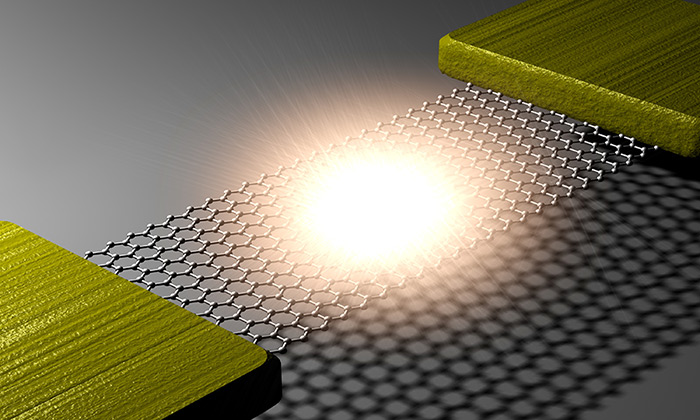Much in the Works at the Physics Machine Shop
Pieces of detectors for particle colliders and neuroscience research line the shelves in the UT Austin Physics Machine Shop. The air constantly hums with the noise of advanced machines at work.

Pieces of detectors for particle colliders and neuroscience research line the shelves in the UT Austin Physics Machine Shop. The air constantly hums with the noise of advanced machines at work.
In honor of the 100th anniversary of the first graduate student earning a degree at UT Austin and our new Discovery Fellows campaign, we're launching a series of posts to introduce you to current graduate students from across the College of Natural Sciences.
Physicists Xiaoqin "Elaine" Li, Gennady Shvets and their colleagues have been exploring new ways to manipulate light on the nanoscale. In a paper published this week in the journal Proceedings of the National Academy of Sciences, they describe work that could lead to better biological sensors and improved devices for optical communications and computing.
The College of Natural Sciences welcomes 11 new faculty this fall. Whether searching for evidence of exotic new physics, enabling the creation of personal robots, or addressing critical problems in cancer research, these industrious and innovative faculty members build on the college's reputation for pioneering research and research-based teaching.

The W. M. Keck Foundation has awarded scientists at The University of Texas at Austin two grants totaling $1.5 million to develop a powerful, alternative method for cooling atoms and involve more undergraduate students in using new advanced technologies for research.
Most modern computers and communications devices use electrons to transmit and process information. But when they're crammed onto smaller and smaller devices, electrons become unruly, generating a lot of heat. Scientists have long dreamed of replacing electrons with particles of light called photons. Because photons don't generate much heat and move at light speed, computer chips could theoretically be made much smaller and faster than current chips.

As traditional electronics begin to reach their physical limits of compactness and speed, scientists and engineers are looking for new ways to stay on track with Moore's Law. One possible solution is to develop spintronics, devices that use a property of electrons known as spin to represent the 0's and 1's in computers. A class of materials called topological insulators (TIs) might have the right properties for spintronics, but since they were discovered less than a decade ago, scientists still know little about their properties.

A team of scientists and engineers from Columbia University, Seoul National University (SNU), Korea Research Institute of Standards and Science (KRISS) and The University of Texas at Austin have demonstrated — for the first time — a visible light source using graphene, an atomically thin form of carbon. This new type of light source could form the basis of faster communications devices and computer displays that are thin, flexible and transparent.
Researchers studying a dangerous type of bacteria have discovered that the bacteria have the ability to block both their own growth and the growth of their antibiotic-resistant mutants. The discovery might lead to better ways to fight a class of bacteria that have contributed to a growing public health crisis by becoming increasingly resistant to antibiotic treatments.
A professor in the College of Natural Sciences has been named to the University of Texas at Austin's respected Academy of Distinguished Teachers for 2015.
Have you ever been working on a document on your computer and it suddenly crashes? Maybe the power goes out or there's a software glitch that causes it to freeze and you lose everything you've been working on for the past hour. New research published today in the journal Nature Communications might eventually lead to computers and other electronic devices that don't have this vulnerability.
Physicist Peter Onyisi, assistant professor in the College of Natural Sciences, was part of a team at CERN working with the Large Hadron Collider (LHC) that discovered something that looked like the Higgs boson particle.
Scientists at The University of Texas at Austin and Princeton University have observed an exotic particle that behaves simultaneously like matter and antimatter, a breakthrough that could eventually enable powerful computers based on quantum mechanics.
Researchers at The University of Texas at Austin have devised a new method for enriching a group of the world’s most expensive chemical commodities, stable isotopes, which are vital to medical imaging and nuclear power, as reported this week in the journal Nature Physics.